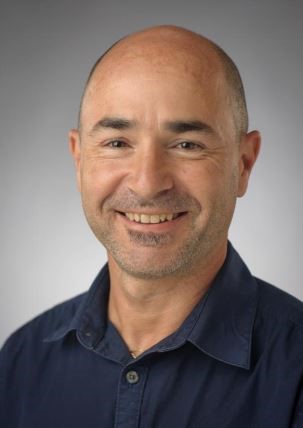Sylvain Costes, Branch Director of Space Biosciences Research at NASA-ARC
Sylvain Costes, Ph.D., is a principal investigator in the Space Biosciences Research Branch at NASA-ARC and the GeneLab Project Manager. Dr. Costes has spent his career leading multidisciplinary research in both academic and government scientific institutions. He is the project manager coordinating the systems biology scientific research effort for the GeneLab project, supporting both internal and external collaboration efforts and the lead of the Radiation Biophysics Laboratory.
Dr. Costes obtained his Ph.D. in the Nuclear Engineering Department at the University of California, Berkeley, where he studied radiation biology. He then joined the mathematics department as a postdoctoral fellow where he developed mathematical formalisms predicting gene deletions observed after exposure to ionizing radiation. Dr. Costes served as a staff scientist at the Image Analysis and Confocal Laboratory of the National Cancer Institute in Frederick, MD, where he expanded his research to include high throughput imaging, live cell imaging and biochemical models describing the interaction and movement of fluorescent proteins. He joined Lawrence Berkeley National Laboratory (LBNL) in 2004 where he led the computer modeling effort for a NASA Specialized Center of Research looking at the risk of Space Radiation on the human breast. This work was in collaboration with NYU Medical School, UCSF and Colorado State University. During his time at LBNL, he also supervised a bioinformatics lab for multi-dimensional microscope image analysis, agent-based modeling and genomic analysis. He also co-founded a startup in 2012, Exogen biotechnology Inc., a spinoff of the Berkeley Lab, dedicated to measure DNA damage in individuals and predicting cancer risk using DNA repair phenotypes.
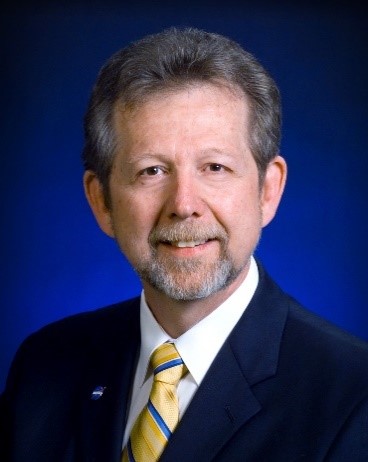
James Green, Chief Scientist at NASA
NASA's Chief Scientist Jim Green serves as principal adviser to the NASA administrator and other senior officials on agency science programs, strategic planning, science policy, and the evaluation of related investments. Prior to his appointment as the chief scientist, Dr. Green was the director of the Planetary Science Division at NASA Headquarters from August 2006 to April 2018. Under his leadership, he managed the New Horizons spacecraft flyby of Pluto, the Juno spacecraft to Jupiter, and the landing of the Curiosity rover on Mars just to name a few. Jim was also the lead consultant on the movie “The Martian.”
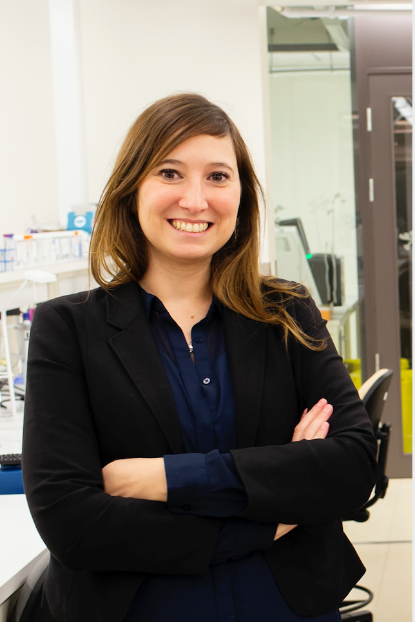
Stefania Giacomello, Group Leader at SciLifeLab
Stefania Giacomello studied Biotechnology at the University of Udine and worked for one year as Research Engineer at the National Institute of Agricultural Botany (NIAB, Cambridge, UK) before moving back to conduct her PhD in Plant Genomics. In early 2013, she started her postdoc at SciLifeLab/KTH (Stockholm, Sweden) where she contributed to the development of Spatial Transcriptomics, a technology that allows to generate 2D gene expression maps of mammalian tissue sections and extended it to plants. Between 2016 and 2018, she worked as Senior Bioinformatician at the National Bioinformatics Infrastructure of Sweden (NBIS). At the end of 2018 she became Group Leader at SciLifeLab/KTH supported by starting grants from the Swedish Research Council. Her research group focuses on the fundamental question of how cell localization influences biological processes in different kingdoms by developing and applying single-cell and spatial transcriptomics approaches. Among the projects of her lab, there are the study of the impact of spaceflight on mouse heart and brain (in collaboration with NASA GeneLab) and the understanding of spatial host-pathogen interactions on wild Arabidopsis thaliana leaves (in collaboration with the Weigel lab at Max Planck).
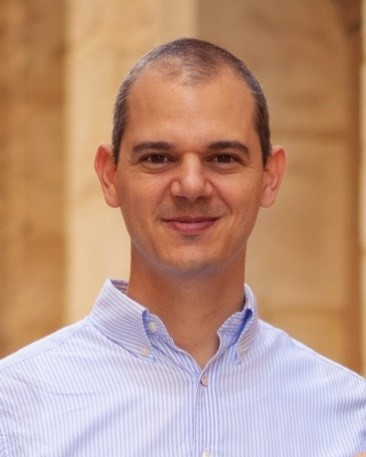
Joseph Borg, Professor at University of Malta
Joseph Borg initially undertook the studies of applied biomedical science in the former Institute of Health Care, now Faculty of Health Sciences, University of Malta and subsequently followed specialised training in Molecular Genetics and Haematology. His research career began in 2004 when he formally joined the Laboratory of Molecular Genetics, Department of Physiology and Biochemistry (University of Malta) as an MSc student and participated in the final stages of the GEOPARKINSON project, an FP5 EU-funded project (QLK4-CT-1999-01133). In 2006, Joseph enrolled as a research assistant on an FP6 EU-funded project – Infrastructure for Thalassaemia Research Network (ITHANET RI-2004-026539) that started his career in experimental haematology and haemoglobin genetics. Subsequent work unveiled the molecular genetics of the HPFH KLF1-related condition (OMIM 613566) and established KLF1 as a novel quantitative trait locus for HbF (HBFQTL6). He has now published over 100 publications that include both conference and peer-reviewed articles. His highest accolades include two high impact first-author publications in Nature Genetics, EMBO J, Haematologica, Human Mutation and Pharmacogenomics.
Joseph's current research interests as an academic with the Department of Applied Biomedical Science continue to focus on the molecular genetics of developmental globin gene switching and control. Together with his Borg Group he conducts extensive research on KLF1 erythroid-specific transcription factor, utilising both genomic (DNA-based) and transcriptomic (RNA-based) approaches in in-vitro (cell cultures) and in-vivo (clinical patients) models.
He is now also a member of the Analysis Working Group for Multiomics at the NASA Gene Lab, USA led by Afshin Beheshti and the ESA Space Omics Topical Team, studying amongst others the effects of spaceflight on erythropoiesis for both astronauts living on board the ISS and other missions as well as a range of mouse model organisms sent to space and back. This work is also done in collaboration with Christopher Mason at the Institute for Computational Biomedicine, Weill Cornell Medicine, USA. Joseph led the Maltese first ever space mission to the ISS, by launching Project Maleth aboard a SpaceX CRS23 from Cape Canaveral, Florida in August 2021 in an effort to study human skin microbiome samples from Type 2 Diabetes Mellitus patients with diabetic foot ulcers.

Sidney Sun, Deputy Director for Programs and Projects Directorate at NASA-ARC
Sidney Sun has been at NASA Ames Research Center since 1988, endeavoring to create new aerospace systems while helping people and organizations grow to their fullest potential. Currently, he is the Deputy Director for Programs and Projects. He provides management and oversight of Ames’ cadre of Project and Program Managers that are developing spaceflight missions and executing research and technology development projects. From 2011 to 2018, he was chief of the Space Biosciences Division, proud of how that organization spearheaded the resurgence of space life sciences research onboard the International Space Station and on the ground. Prior to this role, he led research and development efforts in a multitude of areas including: space biology, life support systems, data systems, and flight systems development. He is a Certified Professional Coach, helping people at Ames and other NASA centers become stronger and more effective leaders. He has a BS degree from Case Western Reserve University and an MS degree from University of California, Berkeley.
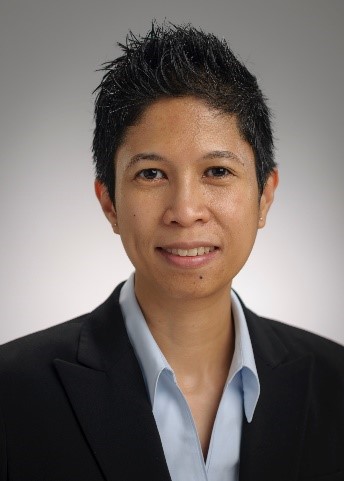
Candice Tahimic, Professor at University of North Florida
Dr. Candice Tahimic (she/her) is currently an Assistant Professor of Physiology in the Department of Biology of the University of North Florida. From 2014 to 2020, Dr. Tahimic conducted research as a Senior Staff Scientist at the Space Biosciences Division of NASA Ames Research Center, focusing on the mechanisms of spaceflight-induced bone loss. Her research at UNF aims to define the molecular mechanisms of cellular and tissue degeneration resulting from spaceflight with a focus on the skeletal and cardiovascular systems. Microgravity and space radiation exposure leads to bone loss, cardiovascular deconditioning, and immune dysregulation that resemble aspects of aging on Earth. By studying the mechanisms that underlie spaceflight-induced tissue degeneration, Dr. Tahimic’s research may help guide the development of better treatments for aging-associated diseases on Earth.
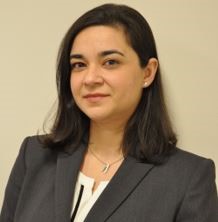
Evagelia Laiakis, Associate Professor at Lombardi Comprehensive Cancer Center
Dr. Laiakis received her Ph.D. degree in Human Genetics from the University of Maryland at Baltimore (2006), studying radiation induced genomic instability and the contribution of pro-inflammatory processes. She subsequently completed her postdoctoral fellowship at Georgetown University (2012), in the field of radiation biodosimetry through metabolomics. She is currently an Associate Professor in the Department of Oncology at the Lombardi Comprehensive Cancer Center with a secondary appointment in the Department of Biochemistry and Molecular & Cellular Biology. Dr. Laiakis is an elected Council Member to the National Council on Radiation Protection and Measurements (NCRP) and has been serving as a member of PAC-1 of NCRP (Basic Criteria, Epidemiology, Radiobiology, and Risk) since 2016. Dr. Laiakis’ lab aims to expand the field of radiation metabolomics and lipidomics through mass spectrometry with untargeted and targeted approaches. Her research focus includes understanding metabolic responses to scenarios involving a wide range of doses (low dose to acute radiation syndrome associated doses), dose rates, normal tissue responses, and radiation quality effects (photons, neutrons, high energy particles), utilizing biofluids and tissues from rodents to humans. Her work has also expanded to space radiation effects, in combination with stressors such as microgravity, with emphasis on skeletal muscle metabolism related changes. Finally, she is an Associate Editor for the International Journal of Radiation Biology (IJRB) and the Radiation Research journal.
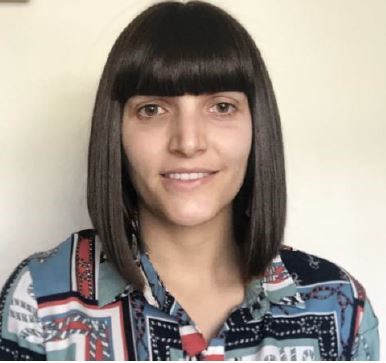
Aránzazu Manzano, Centro de Investigaciones Biológicas Margarita Salas (CSIC, Madrid SPAIN)
Aránzazu Manzano obtained her PhD in Biology (Universidad Complutense de Madrid, Spain) under the direction of Dr. F. Javier Medina and Dr. Raúl Herranz (PCNPmicrogravity Lab, CSIC-Spain). The main line of her research is space plant biology since 2014, focused on the effects of partial gravity levels on the development and growth of Arabidopsis thaliana seedlings, both at the cellular (microscopy analyses) and molecular levels (transcriptome analyses). During her scientific career, she has participated in spaceflight experiments, such as the Awarded Seedling growth experiment, and developed new paradigms in partial gravity simulation on ground facilities. Currently, she is a full member of Space Omics Topical Team and the GeneLab (Plant AWG) working groups.

Lauren Sanders, Staff Scientist at Blue Marble Space Institute of Sciences
Dr. Lauren Sanders is a bioinformatician working at NASA Ames GeneLab in the Data Processing and AI/ML groups. Her recent doctoral thesis at UC Santa Cruz focused on the use of comparative genomics and 3D organoid models to identify developmental origins and cancer drivers in childhood cancers. At NASA, her work involves using multi-omics datasets and machine learning methods to characterize risks to human health from spaceflight travel.

Amber M. Paul, Embry-Riddle Aeronautical University, NASA-ARC, Blue Marble Space Institute of Sciences
Amber M. Paul, Ph.D., is the Embry-Riddle Aeronautical University Wessel Fellow. Dr. Paul received her BSc in Immunology from the University of Alberta, Canada and PhD in Molecular Biology from the University of Southern Mississippi. She completed postdoctoral training at NASA Ames Research Center as a Universities Space Research Association fellow and is currently a visiting Blue Marble Space Institute of Science visiting scholar. Dr. Paul's research focuses on immunity and neuroendocrine crosstalk in extreme environmental conditions. She is interested in how cellular and physiological stress in both acute and chronic settings impacts immunity and nervous system function. Her goal is to identify signaling pathways involved and develop countermeasures that can circumvent these impacts. Dr. Paul is a co-I on a NASA Human Research Program supported project. She is currently co-leading The Omics Lab for Health and Human Performance at Embry-Riddle Aeronautical University.
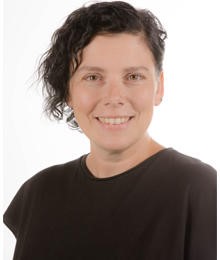
Christine Moissel-Eichinger, Professor at Medical University of Graz
Christine is a full professor at the Medical University of Graz, Austria and the head of the Center for Microbiome Research. After her PhD in Regensburg, Germany, she joined the NASA Jet Propulsion Laboratory for a one-year postdoctoral period. Since then she is involved in numerous projects dealing with Planetary Protection, microbial life in confined spacecraft and mock-ups, and astronaut health.
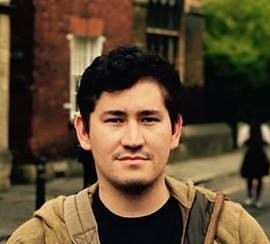
Diego Galeano, Faculty of Engineering, National University of Asunción, Paraguay
Diego Galeano is a machine learning researcher at the Faculty of Engineering, National University of Asunción in Paraguay, and ML consultant at Rheos Medicines (US). Diego obtained his PhD in Computer Science at Royal Holloway University of London, specializing in Machine Learning for Drug Discovery under the supervision of Prof. Alberto Paccanaro. Between 2017 and 2020, Diego was visiting research fellow at Yale University, working under the supervision of Professor Mark Gerstein on enhancer prediction and interpretable machine learning, and he also worked under the supervision of Prof Michael Bronstein at Imperial College London on geometric matrix completion models for drug repositioning. Diego’s main areas of research interest involves the development of ML models for low-chemical data regimes, drug target prediction, and drug side effect prediction.

Chris Wolverton, Professor at Ohio Wesleyan University
Chris Wolverton is the Albert M. Austin Professor in the Natural Sciences and Chair of the Department of Biological Sciences at Ohio Wesleyan University, an undergraduate college in Delaware, OH, where he teaches courses in introductory cell biology, genetics, and plant physiology. His lab studies plant gravity perception and its influence on the control of differential growth. He received a BS in Botany (Honors) from Miami University and a PhD in Plant Biology from Ohio State University, supported by a NASA Graduate Student Research Program Fellowship and a Presidential Fellowship from The Ohio State University. His professional service includes three years on the ASGSR Board of Governors (2015 – 2018) four years as an elected officer and Chair of the Midwestern Section of the American Society of Plant Biologists. He currently serves on the Summer Undergraduate Research Fellowship Award Committee for the American Society of Plant Biologists (2018 – 2022).

Sarah Wallace, Microbiology (NASA-JSC)
Sarah Wallace received her B.S. in Biology from Wichita State University and her doctorate in Biomedical Science from the Microbiology and Immunology Department at the University of Texas Medical Branch (UTMB). While attending graduate school at UTMB, she was awarded both a Texas Space Grant Consortium Fellowship and a NASA Space Life Science Fellowship, which afforded her the opportunity to conduct much of her doctoral research in collaboration with the Microbiology Laboratory at the Johnson Space Center. In her current position with NASA Johnson Space Center, Dr. Wallace serves as a technical lead in the Microbiology Laboratory, which is responsible for mitigating infectious disease risk during human spaceflight. Her responsibilities include the assessment of microbial risk based on vehicle and mission architecture as well as crewmember, food, and environmental monitoring. These assessments are used to develop requirements for NASA and commercial spaceflight vehicles, including the International Space Station (ISS). In addition to her operational support of human spaceflight, Dr. Wallace leads new technology initiatives for her discipline with the goal of reducing Earth-dependence for complex sample analysis. Toward that goal, she has pioneered in situ microbiome investigations in extreme environments. She spearheaded the development of a complete end-to-end, sample-to-sequencer process for microbiome assessments (human and the environment) and oversaw its successful implementation during the NASA Extreme Environment Mission Operations (NEEMO) 21 and 22 missions, which took place on the ocean floor. As PI for the Genes in Space-3 flight experiment, she transitioned the process tested during NEEMO to the ISS, which resulted in the first identification of microbes collected and cultured entirely off Earth. Dr. Wallace continued to advance modern microbiome analysis off the planet with a flight study, the Biomolecule Extraction and Sequencing Technology (BEST) payload, by implementing a culture-independent, direct swab-to-sequencer process that can be conducted completely on the ISS. This payload has since been transitioned to operational use onboard the ISS known as BioMole and is expanding our understanding of the ISS microbiome through in situ sampling and analysis. Dr. Wallace also performs work aimed at understanding how the spaceflight environment impacts cellular behavior through investigations using both ground-based modeling and true spaceflight.
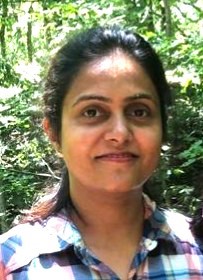
Parul Gupta, Research Associate at Oregon State University
Parul Gupta is a Research Associate in the Department of Botany and Plant Pathology at Oregon State University. She obtained my PhD in India. She is a plant molecular biologist with expertise in genomics, transcriptomics, and bioinformatics. She is passionate about and very interested in plant biology research in the space environment. Towards this interest, her research focus is on mechanisms regulating plant growth and development under microgravity.

Sami Saarenpää, PhD Student at SciLifeLab and KTH Royal Institute of Technology
Sami Saarenpää is a PhD student in the Giacomello lab at SciLifeLab and KTH Royal Institute of Technology in Stockholm, Sweden. His research focuses on method development of spatially resolved and single-cell technologies, specifically on non-model organisms like plants where spatial data is a key aspect in understanding the molecular functions of the tissue.
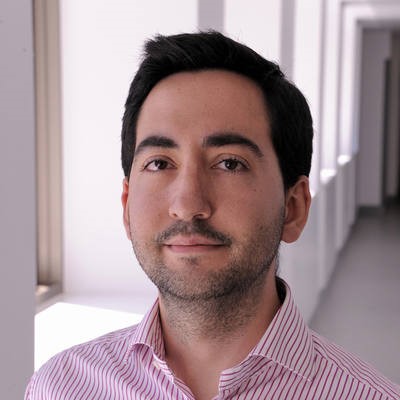
Pedro Madrigal, European Bioinformatics Institute (EMBL-EBI) and ESA Space Omics Topical Team
Pedro Madrigal is an engineer and bioinformatics scientist. In 2015 he earned a PhD in Bioinformatics from the Adam Mickiewicz University in Poland with the support of a Marie Skłodowska-Curie fellowship. Then he was a postdoctoral research associate at the University of Cambridge and visiting scientist at the Sanger Institute, where he led the computational analyses of a diversity of studies on stem cell biology and cellular differentiation. He has developed statistical methods and contributed to the Bioconductor open source project with packages for sequencing data analysis. In 2021 he joined the Gene Expression Team at the European Bioinformatics Institute (EMBL-EBI) to work on the Expression Atlas project. He is a member of the Multi-Omics AWG of NASA GeneLab and the Space Omics TT funded by the European Space Agency - ESA.

Henry Cope, PhD Student at University of Notthingham
Henry Cope is a PhD student at the School of Medicine, University of Nottingham, and was a NASA GeneLab 2021 Summer Intern. His research involves applying computational methods, within the domains of bioinformatics and computer vision, to data associated with the physiological deconditioning induced by spaceflight. Analysis of omics and imaging data from model organisms and humans can help to further the mechanistic understanding of spaceflight-associated deconditioning, such as loss of muscle mass and performance. These analyses can also be used to inform countermeasure design for astronauts and patients on Earth experiencing similar health issues. Within his PhD, Henry is also looking to advance spaceflight life sciences research by writing software for biomedical CubeSat missions, and investigating ethical issues surrounding astronaut personal health data.
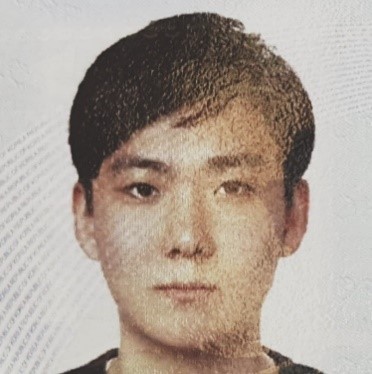
Alex DongHyeon Seo, Research Intern at University of Wisconsin-Madison
DongHyeon (Alex) Seo is a biostatistics research intern at Gilroy lab who studied Statistics and Mathematics for his bachelor's degree at the University of Wisconsin-Madison. He will start his Master's degree in Computer Science at the University of Southern California starting in the following semester. His research interests include interdisciplinary data science, Bayesian statistics, and application of interpretable deep learning methods.

Erik Hanschen, Scientist at Los Alamos National Lab
Erik is an evolutionary biologist and scientist at Los Alamos National Lab working on a variety of biological problems including bioremediation and acclimatization of Arabidopsis thaliana to the spaceflight environment.
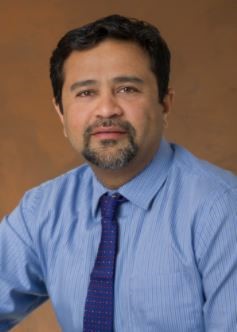
Parag Vaishampayan, Space Biology Portfolio Scientist at NASA-ARC
Parag Vaishampayan is the Space Biology Portfolio Scientist at NASA’s Ames Research Center in California’s Silicon Valley. He provides overall scientific leadership and direction to maintain the scientific integrity of projects within the ARC Space Biology Portfolio. He supports over 70 active space biology projects to better understand how spaceflight affects living systems in simulated ground-based experiments, the International Space Station (ISS), and preparing future human exploration missions beyond low Earth orbit (BLO).
Before joining Ames, he worked at NASA’s Jet Propulsion Laboratory (JPL) since 2008. He has supported planetary protection implementation for several NASA missions, including MSL, InSight, M2020, MARCO, and Psyche. He has successfully managed several multi-year, multi-institutional research projects as a principal investigator (PI).
His research work has appeared in more than 60 peer-reviewed publications, book chapters, and several (more than 50) presentations. He was instrumental in developing and implementing several novel molecular approaches, instruments, and bioinformatics analysis tools widely used by microbial ecologists. He is a leading microbial ecologist and bioinformatician working in the field of Space biology, Astrobiology, and planetary protection. He is the recipient of several prestigious honors and awards, such as the NASA Exceptional Public Service Medal (2017), JPL Explorer award (2016), Voyager award (2016, 15), Mariner award (2012).

Sigrid Reinsch, Director of Education and Outreach (Space Biology Program) NASA-ARC
Dr. Sigrid Reinsch is the Director of Education and Outreach for the NASA Ames Space Biology Program and directs two impactful summer internship programs: GeneLab for High Schools (GL4HS) and the Space Life Sciences Training Program (SLSTP). Dr. Reinsch has served as a Senior Scientist on the NASA GeneLab project since 2014 and currently serves as the GeneLab liaison for two GeneLab Analysis Working Groups (AWG) – Plants and Animals. She also leads the GeneLab Education Working Group (EWG). These groups function to mobilize scientists (AWGs) and teachers (EWGs) to use the data housed in the GeneLab public database for novel peer-reviewed publications, experimental proposals, and course curricula at both the K-12 and college level. Reinsch received a bachelor’s degree in Biology from University of California Santa Cruz (UCSC), a doctorate in Cell Biology from the University of California San Francisco (UCSF), and post-doctoral training at the European Molecular Biology Laboratory (EMBL) in Heidelberg, Germany prior to joining NASA in 1998.

Siva Vanapalli, Professor at Texas Tech University
Dr. Siva Vanapalli is a Professor in Chemical Engineering and the Bryan Pearce Bagley Regents Chair at Texas Tech University. He obtained his PhD from the University of Michigan and B. Tech from the Indian Institute of Technology, Kharagpur. His research interests are in the areas of microfluidics, complex fluids, cancer, healthy aging and technology development. His laboratory has been involved in several space-flight projects with C. elegans focusing on muscle strength, aging and gut microbiome. He has published over 80 journal articles, and several patents that have been licensed to startup companies

